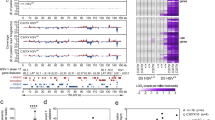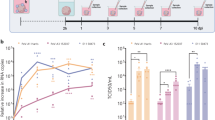Abstract
Cytokines are widely considered to function as major mediators of neuropathogenesis of HIV-1 infection. This view is based on a large amount of data obtained in vitro, in animal models and in human brain tissue obtained postmortem. Evidence for the involvement of interleukin-1 and transforming growth factor-β1, summarized here, indicates that these cytokines likely control HIV-1 expression in the brain and astrocytosis, the two hallmarks of brain in AIDS patients. Although the data do not reveal the precise time course of molecular and cellular changes in vivo, they strongly suggest a complex pattern of interactions whose ordering in time determines when and where HIV-1 is expressed in the brain. Further kinetic data are therefore urgently needed to shed light on the heterogeneity of HIV-1 expression in the brain.
This is a preview of subscription content, access via your institution
Access options
Subscribe to this journal
Receive 12 print issues and online access
$259.00 per year
only $21.58 per issue
Buy this article
- Purchase on Springer Link
- Instant access to full article PDF
Prices may be subject to local taxes which are calculated during checkout
Similar content being viewed by others
Author information
Authors and Affiliations
Rights and permissions
About this article
Cite this article
Vitković, L. Neuropathogenesis of HIV-1 infection: interactions between interleukin-1 and transforming growth factor-β1. Mol Psychiatry 2, 111–112 (1997). https://doi.org/10.1038/sj.mp.4000220
Accepted:
Issue Date:
DOI: https://doi.org/10.1038/sj.mp.4000220
This article is cited by
-
Cytokine signals propagate through the brain
Molecular Psychiatry (2000)



